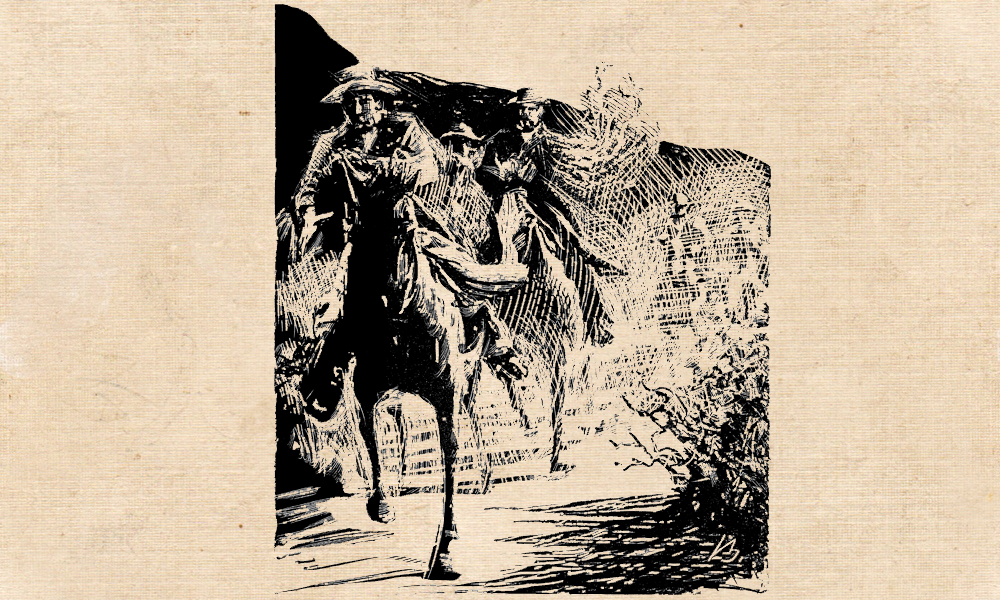
Although the infamous Gunfight Near the OK Corral is arguably the best known and most written about shootout in the Old West, little is known about exactly which guns were used by the combatants. The only firearms that can be identified with any certainty are the two 7½-inch barreled, .44-40 Colt Single Action Army revolvers used by Billy Clanton and Frank McLaury. These Frontier Six-Shooters were retrieved at the site, right after the fight and were recorded. Identification of any other firearms, such as Wyatt Earp’s sixgun, the shotgun used by Doc Holliday, or the Winchester rifle fired by Tom McLaury, is strictly speculative. There is one gun however, at least in this firearms student’s mind, as well as that of a number of OK Corral aficionados, that quite probably saw action during this legendary fracas. That weapon is Virgil Earp’s sixgun.
Virgil was known to have preferred, and often carried, a Smith & Wesson (S&W) New Model No. 3 revolver, in .44 S&W Russian caliber. It is quite likely that it was this same shooting iron that he had tucked in his waistband when he, as Tombstone’s chief of police and a deputy U.S. marshal, confronted the “cowboys,” and moments later fired during the gunfight.
Although there were several variations of the New Model No. 3 produced—including the Target, Turkish and the Frontier models—based on production dates of the various versions, it would have been the standard model Single Action that Virgil owned at the time of the OK Corral fight. Introduced in 1878, S&W’s New Model No. 3 represented the last of the company’s No. 3 series, and marked the pinnacle of their top-break single-action design. Also referred to in S&W’s 1883 catalog as the “Army Model,” the sixgun retained much of the basic profile of the earlier American, Russian and Schofield revolvers, but with a less-pronounced hump (sometimes called the “knuckle”) at the rear top of the back strap of the grip, along with a redesigned, rounded butt shape (considered by many as the most comfortable large-frame single-action grip style ever produced). While it continued the use of the earlier S&W-style, circular or “bow type” trigger guard, the distinctive hooked or spurred trigger guard, as found on the Second and Third Model Russians, was offered as an option. Another factory offering was an optional attachable shoulder stock.

– Courtesy Rock Island Auction Co. –
Internally however, the new Model No. 3 incorporated a number of improved parts, such as a rebounding hammer with a manual half-cock notch (standard on all New Models except those with factory target sights), an improved cartridge extractor mechanism, a shorter barrel extractor housing, and a better cylinder retention mode, which omitted the need for a separate cylinder catch and retaining screw.
This state-of-the-art automatic cartridge ejector (when opened fully) S&W featured the traditional fluted cylinder, and factory finish was either blued or nickel-plated. Barrel lengths varied from a short 3½ inches up to 8 inches, with the 6½-inch barrel being standard. Weighing in at around 2 pounds, 8 ounces with the 6½-inch tube, grips of checkered hard rubber with the S&W monogram logo, or walnut, were standard. With a total of 35,796 standard model No. 3 Single Actions manufactured up until 1912, all of the New Model No. 3’s frames were turned out by 1898, which qualifies them as antiques. However, back when Virgil faced the cowboys that blustery day of October 26, 1881, if he was packing his S&W New Model No. 3, he would have been confident in the knowledge that he was facing danger with one of the most advanced six-shooters of the day!




